How Payment Plans Work Under Chapter 13
If you are considering bankruptcy, as an individual, you have a choice between Chapter 7 and Chapter 13 (Chapter 11 is seldom used for individuals). Since you may have heard that Chapter 7 involves a liquidation sale of your property in some cases (or of the many other advantages that Chapter 13 has), you may have decided that Chapter 13 is better for you. However, you may have been hesitant to pursue the matter further, as you also heard that
Chapter 13 involves a repayment of your debts, which seems to defeat the purpose of filing bankruptcy.
However, in reality, Chapter 13 does not require you to repay every single penny of your outstanding debts in most cases. Under the payment plan, only a fraction of your debts need to be repaid in the majority of instances. Understanding what debts must be repaid under the plan is important in determining whether Chapter 13 is right for you.
What Must Be Repaid?
Your repayment plan in Chapter 13 becomes effective after the court approves it in a
confirmation hearing. In order for the plan to be approved, it must meet certain standards. For one, there must be provisions for repayment of all administrative expenses and priority claims. As a result, priority claims, such as child support, taxes and alimony, and administrative expenses, such as court costs and attorneys’ fees must be fully repaid once you have completed the plan.
Additionally, in order to be approved, the repayment plan must meet certain standards regarding treatment of unsecured creditors. These are creditors holding debts not secured by collateral, such as medical bills or credit cards. Under the bankruptcy laws, the plan must meet the “best interests of the creditors” test before it may be approved. This test requires your plan to give your unsecured creditors as much as they would have received if your had filed Chapter 7 bankruptcy.
Although this sounds like your unsecured creditors must be repaid a significant amount, this is not true, as Chapter 7 discharges most unsecured debt, so most unsecured creditors receive nothing. Because of this fact, most Chapter 13 plans pass the test without making provisions for significant repayment (or any payment at all) of unsecured debts.
However, in some cases, you may be required to repay some unsecured debt if a creditor objects to the plan. If this rare instance occurs, the proposed plan must pass a “disposable income” test. This test looks at your disposable income and your ability to use it to repay some of your unsecured debts. If you have sufficient disposable income, you may be required to tailor the payment plan to allow for repayment of at least some of your unsecured debts.
Fortunately, the “disposable income” test is not a cause for alarm, since most Chapter 13 filers have little income left over after they have paid priority, administrative and other debts. As a result, few creditors object to repayment plans and the test is rarely invoked.
Although it is not a requirement for plan approval, secured debts must be brought current under the plan in order for you to be able to keep the collateral. These are debts where your promise to repay is secured by collateral (e.g. house in a mortgage or car in a car loan).
Speak To An Attorney
In truth, Chapter 13 bankruptcy offers many advantages over Chapter 7. Although individuals more commonly file Chapter 7, you should not fail to consider Chapter 13 as a solution to your crushing debt load. To learn more about which type of bankruptcy is right for your situation, speak to an experienced bankruptcy attorney for a recommendation of the best way to proceed.
